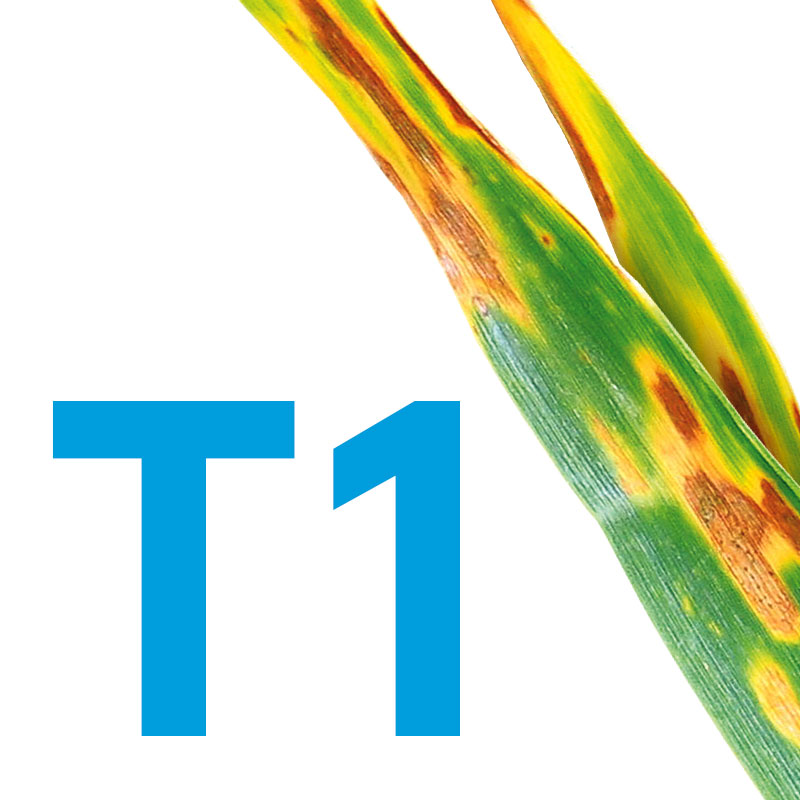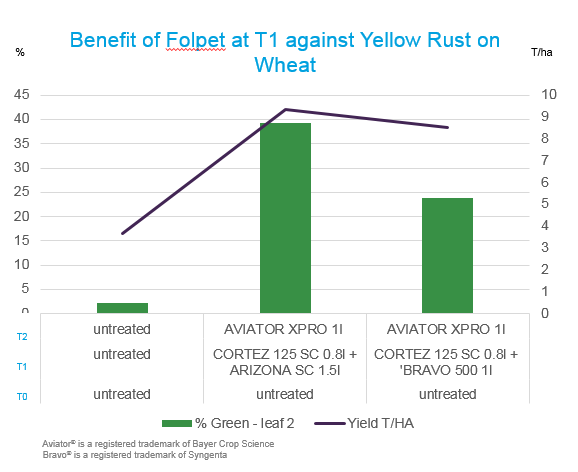2017 - Time to get serious about spring disease control

With farmers and agronomists reporting relatively favourable conditions for T0 applications, attention must now turn to one of the key timings for successful spring disease control.
The onset of spring has seen a tangible surge in crop growth in recent weeks with wheat crops really starting to take off. Whilst it has generally been a kind spring, fluctuating temperatures and the ever-present threat of wet weather mean growers can’t take their eye off the ball in terms of disease prevention.
Well timed T1 applications are regarded as being one of the most important in terms of getting on top of disease pressures:
Failure to provide adequate protection now could leave growers trying to fire-fight infections for the rest of the season.
Leaf 3 just fully emerged is the ideal T1 timing, typically GS32, enabling full coverage of the whole leaf providing protection for the emerging leaf 2. Dissection of the main tillers to establish leaf 3 fully emerged is the best way to ensure the right timing. Spraying too early risks leaving parts of leaf 3 unprotected: if this happens on the main tillers, the subsequent side tillers are likely to be more backward, resulting in more unprotected leaf 3 in the crop.
A multi-site is a key component of the T1 application as it will provide both contact protection against Septoria and aid resistance management.
A folpet based multi-site should be considered as part of the T1 protocol for three reasons:
- To provide new leaves with an extra level of protection against Septoria
- To maximise the uptake of partner products
- To provide additional Yellow Rust control
With T1 (GS32) applications typically applied at the end of April or early May, it is too soon to predict how the weather will impact the timing of these treatments: any delay in proceedings due to adversely wet conditions will put greater emphasis on the importance of providing good protection and fully utilising the curative activity of mix components.
Folpet can assist partner products by ensuring their uptake isn’t detrimentally affected:
Trials have shown that, when used in conjunction with azoles and SDHIs, folpet does not affect the uptake of partner products therefore maximising their curative kick-back.
Arizona(500 g/l folpet) has protectant activity against yellow rust and independent trials have shown how it can help to improve yellow rust control at T1 when added as the multi-site option. Results below from a trial in cv Reflection conducted by Prime Agriculture show the responses from a T1 application presented here as differences in green leaf retention which directly correlate to yellow rust control. Using folpet as the multi-site component in the T1 mixture translated to a 0.79 t/ha yield benefit compared to chlorothalonil

Similar yield benefits are also seen when using Manitoba (Adama’s co-formulation of 50 g/l epoxiconazole and 375 g/l folpet): this again shows that folpet is the ideal multi-site product, especially at T1 where yellow rust is an issue.
 United Kingdom
United Kingdom Select country
Select country




